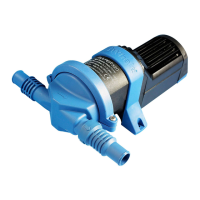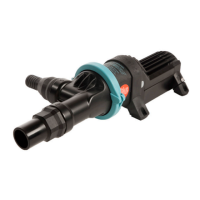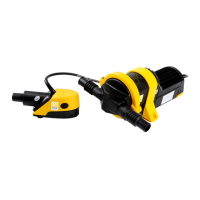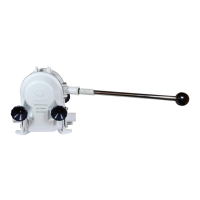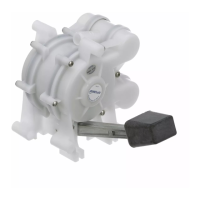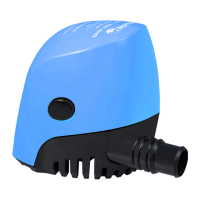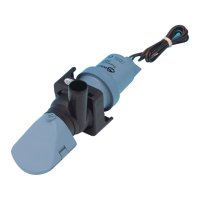• Secure cable by screwing ‘P’ clamp to bulkhead ensuring it is located
approx. 100 mm (4”) from strainer outlet (Fig 4).
11.iv Electrical Wiring
• For installation use pre-wired Deutsch® connectors (attached).
• If you are not familiar with applicable electrical standards, ensure that the
unit is installed by a qualified electrician/ technician.
WARNING: Fire hazard. Wiring must comply with applicable electrical standards and
include a properly rated fuse or circuit breaker. Improper wiring can cause a fire
resulting in injury or death.
NOTE Switch off the power prior to making connections. Suggested wiring information
is given as a guide only. For full information, refer to the USCG, ABYC and ISO
regulations for marine applications and wiring gauges, connectors and fuse protection.
CONNECT POWER CABLES
The polarity is indicated by coloured cable (Positive - red, Negative - black).
The white wire can be connected to a running light to indicate when the system is in
use and / or as a manual override switch.
NOTE The pump is protected against reverse polarity connection (the inline fuse will
blow)
NOTE: Undersized wire in the circuit before the pump will reduce voltage when the
pump is under load, thus giving poor performance and potential motor failure.
• Ensure all power cables installed are at least the minimum wire size -
1.5mm² (16 AWG).
• To control the pump, an isolator switch must be fitted between the
positive live terminal on the battery and the positive lead on the pump.
(See section 11 v)
WARNING Ensure that there are no loops of electrical cable that could be a hazard.
11.v FITTING THE FUSE
Fuse rating for BP2082B (12 V d.c.) pumps 10 Amp automotive.
Fuse rating for BP2084B (24 V d.c.) pumps 5 Amp automotive
The in-line fuse assembly supplied must be fitted to the positive side of the pump.
(see Fig 7)
PURPOSE OF FUSE: The purpose of this fuse is to protect the pump from serious
damage in the event of system blockages, therefore please ensure all valves are fully
open before operating the pump.
If the fuse blows:
a) Check that all system valves/stop cocks are open
b) Check that the inlet and outlet ports are not blocked
c) Check that the rest of the system is not blocked
d) Check for reverse polarity connection

